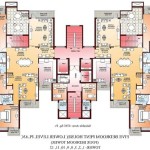Draw Your Own Home Plans: A Guide for Aspiring Architects
Dreaming of building your own home? While it might seem daunting, you can take control of the design process and realize your vision by drawing your own home plans. This empowers you to create the space that perfectly meets your unique needs and aesthetic preferences. With a little planning, patience, and the right resources, you can embark on a rewarding journey of architectural creation.
Understanding the Basics of Home Design
Before putting pencil to paper, it's crucial to grasp the foundational principles of home design. This involves understanding the following:
- Floor Plan: The blueprint of your home, showcasing the arrangement of rooms, walls, and doors. It outlines the layout and flow of the home.
- Elevation: A visual representation of the exterior of the home from different angles, showcasing the facade, roofline, windows, and doors.
- Building Codes and Regulations: Local codes dictate essential aspects like setbacks, height restrictions, and fire safety requirements. Familiarizing yourself with these regulations is essential for ensuring your design complies with legal standards.
- Site Analysis: Understanding the site's topography, sun orientation, and surrounding structures is essential for maximizing natural light, ventilation, and privacy.
Consider attending a home design workshop or reading introductory books on architecture. These resources will equip you with the fundamental concepts and vocabulary needed to confidently approach your project.
Essential Tools for Drawing Home Plans
Several tools and software can assist you in creating detailed and professional-looking home plans. Here are some options to consider:
- Graph Paper: A classic and accessible option, graph paper allows you to create precise measurements and maintain consistent proportions. Begin with a simple pencil and eraser, then experiment with different line thicknesses to add detail and clarity.
- Computer-Aided Design (CAD) Software: Programs like AutoCAD, SketchUp, and Revit offer powerful tools for creating intricate plans, elevations, and 3D models. They provide advanced features for manipulating objects, adding annotations, and generating detailed drawings.
- Online Home Design Tools: Numerous free and paid online platforms offer user-friendly interfaces for generating floor plans, elevations, and even 3D visualizations. They often provide pre-built elements and templates to simplify the process.
Selecting the right tool depends on your comfort level with technology and the complexity of your design. Experiment with different options to find one that suits your needs and workflow.
Steps to Draw Your Own Home Plans
Once you have a basic understanding of home design concepts and have chosen your tools, follow these steps to create your home plans:
- Define Your Needs: Start by clearly defining your vision for the home. How many bedrooms and bathrooms do you need? What specific spaces are essential (e.g., home office, playroom)? Do you desire open-plan living, or a more traditional layout?
- Sketch Initial Ideas: Begin by sketching rough layouts on paper. Play with different arrangements of rooms and experiment with different shapes and sizes. Don't be afraid to try unconventional ideas or explore unconventional floor plan layouts.
- Develop a Detailed Floor Plan: Once you have a general layout you like, create a more detailed floor plan using your chosen tools. Accurately measure and position walls, doors, windows, and other features. Use symbols to represent furniture, appliances, and fixtures for visual clarity.
- Create Elevations: Develop exterior elevations to visualize the home's facade. Consider the style of the house, materials, and landscaping to create a cohesive visual representation.
- Refine and Iterate: It's rarely a one-time process. Review your plans, identify areas for improvement, and make necessary adjustments. Seeking feedback from friends, family, or a professional architect can provide valuable insights.
- Consult with Professionals: While you can draw your own plans, it's crucial to consult with professionals like architects, engineers, and contractors to review your design and ensure it complies with building codes and regulations. They can also provide expert advice on structural soundness, energy efficiency, and construction feasibility.
Drawing your own home plans is a rewarding journey that allows you to express your creativity and design a space that truly reflects your lifestyle.

Design Your Own House Floor Plans Roomsketcher

Design Your Own House Floor Plans Roomsketcher

Create Floor Plan

Make Your Own Blueprint How To Draw Floor Plans

Make Your Own Blueprint How To Draw Floor Plans

Design Your Own House Floor Plans Roomsketcher

Design Your Own House Floor Plans Roomsketcher

Floor Plan Creator And Designer Free Easy App

Where You Can Buy House Plans Live Home 3d

Floor Plan Creator Planner 5d








